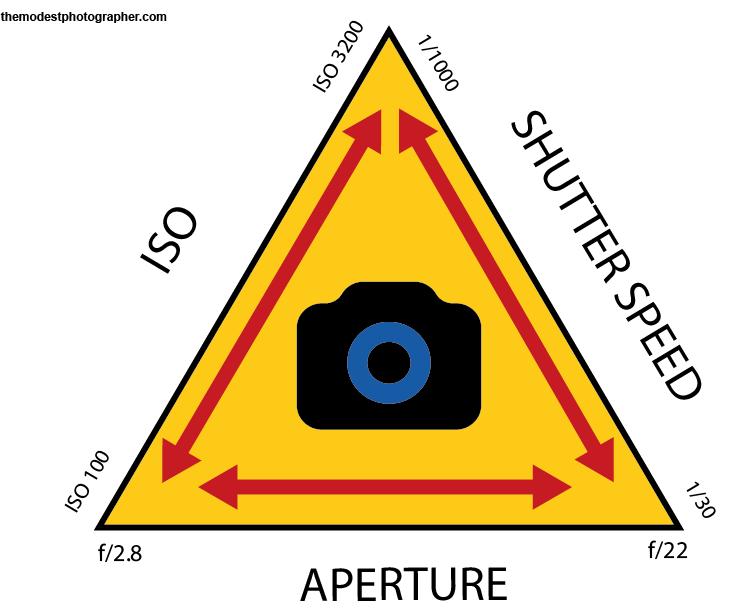With the so-called Exposure Triangle, you’ve got a triangle with shutter speed, ISO and aperture at each corner.
ISO and sensitivity to light
Your ISO is basically how sensitive your sensor is to light. If you set your ISO to a really low value, say 50, you will need to be taking pictures in really bright light if you’re working without floodlights. Essentially, you will need to be shooting in daylight, to put it in a nutshell.
ISO values more or less doubles to 100, 200, 400, 800, etc. If you crank it up to something weird and wonderful to something like 25,600 then, apart from the grain being the size of golf balls (because the higher the ISO, the lower the quality*), you can shoot in very low light.
*Obviously, ‘quality’ often depends on the purpose of the shot. For example, if you’re trying to illustrate the effect of high ISO, it is perfectly acceptable to produce a high quality grainy image.
Aperture and depth of field
With aperture, you’ve got lenses at f/2.8, f/4, f/5.6, f/8, f/11, f/16, etc. The higher the number, the greater your depth of field. The basic way of understanding this, is that you will have more of the image in focus in front and behind your focus point.
So, if I’m shooting with an aperture of f/2.8, and my subject is either in front of or behind my focus point, forget it. That subject will be blurred.
If I’m shooting with an aperture of f/8, I’ll get away with it.
Shutter speed and subject movement
Your shutter speed works with your subject matter. The basic rule is, the faster your subject matter is moving, the higher the number you need. It all depends on how steady you can hold that camera, but if you set your shutter speed at 1/30 you can take a picture of something static.
At 1/125, you can shoot a subject that’s slightly moving. At 1/250, your subject can be jogging. At 1/500, they can be running or on a pedal bike. Shooting a motorcycle might need a shutter speed of 1/1000, while a Formula One car might need a value of 1/2000.
The Exposure Triangle
Your shutter speed together with your aperture and ISO determine your camera settings, and they all work in relation to one another. They form the three sides of the Exposure Triangle.
Say my light meter tells me I want an ISO of 400 ASA, I can keep that constant while changing my shutter speed or aperture to keep the same amount of light falling on the sensor. Say I have a shutter speed of 1/125 and an aperture of f/8, but I want to up my shutter speed by ‘one stop’ to 1/250. My aperture has tthen got to come down one stop to f/5.6. If I knock the shutter speed up to 1/500, I’ve got to take the aperture down another stop to f/4.
On the other hand, if I want to slow the shutter speed from 1/125 to 1/60, I could move the aperture up to f/11.
Now, if I decided to increase the sensor’s light sensitivity by increasing the ISO to 800 ASA, I can then move the shutter speed up one stop to 1/250 or the aperture up to f/11.
If I decrease the ISO to 200, I’ve made the sensor less sensitive, so if I want to keep my 1/125 shutter speed, I’ve got to open my aperture up to f/5.6. Or, I can stay at f/8, and bring the shutter speed down to 1/60.
Your camera settings and the Exposure Triangle
Your shutter speed is normally known as time value (TV) on your screen. By choosing to base exposure on TV, you can choose your shutter speed and the camera will adjust the aperture to match.
Likewise, aperture value is AV. Using this setting will allow you to set your aperture manually with the shutter speed automatically adjusted.
You also have an ‘M’ setting for manually setting all three values. To see a great example of when manual settings are preferable, read my blog on how to take photos in the dark which uses the example of the Haldon Night Run.
Have a burning photography question you would like Al to write about in his next blog post? Email info@miraclepr.com with your request.

